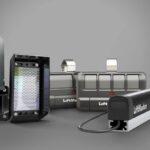Programming an RC car remote involves translating the signals from your remote’s controls into actions for your RC car. This process typically involves mapping the input values from the remote’s potentiometers to control servo angles for steering and motor speed for throttle. Understanding how to process these signals is crucial for customizing and enhancing your RC car’s performance.
The raw values from the potentiometers on the receiver side of an RC car remote usually range from 0 to 1023. For steering, these values need to be mapped to a servo angle range, typically from 0 to 180 degrees. This means that a potentiometer reading of 0 might correspond to a full left turn, 1023 to a full right turn, and a value around 512 to the center position.
For throttle control, the potentiometer range of 0 to 1023 needs to be interpreted to control both forward and backward motion, as well as stop. A common approach is to divide this range into three sections. Values from 0 to 512 can represent reverse, where 0 is maximum reverse speed and 512 is zero speed. Values from 512 to 1023 can then represent forward motion, with 512 being zero speed and 1023 being maximum forward speed. The value around 512 acts as the neutral or stop point for the throttle.
When developing your code, especially if you’re using Arduino or similar microcontrollers, it’s highly recommended to use the serial monitor for testing before connecting to actual hardware like servos and motor drivers. This allows you to see the raw potentiometer values and the mapped output values in real-time, making debugging and fine-tuning your control logic much easier. By printing the values of the variables involved in processing the remote inputs to the serial monitor, you can verify that your mapping and scaling calculations are working as expected.
To make your code cleaner, more readable, and easier to maintain, consider breaking down the programming into modular functions. For instance, you could create separate functions for:
- Calculating the servo angle from the raw potentiometer value.
- Transforming the raw value (0-1023) into a throttle value that controls forward and backward motion.
- Functions to directly control the inputs of an L298N motor driver board (or similar) for forward and backward driving.
- A function to set the motor speed based on the processed throttle value.
Approaching the programming task one step at a time is advisable. Start by modifying your code to read and display the raw potentiometer values. Then, incrementally add functionality, testing each stage using the serial monitor. If you encounter any issues, reviewing your code in smaller, function-based segments and consulting online resources or forums with specific questions, along with your complete code and a clear description of the problem, can significantly streamline the debugging process.
